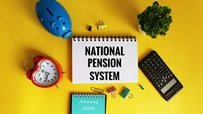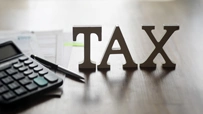Your Dream Ride Just Got Cheaper: Tax Relief & Accessible Two-Wheeler Loans
Disclaimer: This blog is generic in nature. Ujjivan SFB does not offer any personal finance products or services.
September 26, 2025

India’s Goods and Services Tax (GST) regime has just undergone one of its most impactful revisions, popularly dubbed GST 2.0, and it’s set to take effect on September 22, 2025. This GST reform bill simplifies the structure into two primary slabs—5% for essentials and 18% for standard goods—with a new 40% “demerit” rate reserved for luxury and sin products.
For India’s two-wheeler industry, the changes are dramatic: motorcycles and scooters up to 350cc will now attract only 18% GST instead of 28%, while premium models above 350cc move to the highest 40% slab. Electric two-wheelers retain their 5% GST to continue promoting sustainable mobility.
To understand the gravity of this change, we must first look at why two-wheelers form the backbone of India’s mobility landscape.
Two-Wheelers: India’s Mobility Backbone
For decades, two-wheelers have been part of economic lifelines among many Indian households. Whether it’s a delivery agent navigating city lanes, a farmer transporting goods to the mandi, or a student commuting to college, motorcycles and scooters remain indispensable.
In FY 2024–25, India sold approximately 19.6 million two-wheelers, while exports were about 4.2 million units. Motorcycles dominate with nearly 65% market share, while scooters account for around 35%, especially popular among women and urban commuters. Mopeds and niche vehicles make up the rest.
Against this backdrop, GST 2.0’s tax cuts on commuter bikes are market movers. Let’s move on to, what exactly has changed?
Understanding the GST Tax Changes
The new GST bill alters the tax landscape for two-wheelers as follows:
This restructuring reflects a deliberate strategy: Prices for commuter bikes and scooters will fall, making them more affordable for millions of families. Meanwhile, luxury motorcycles will get pricier, signaling the government’s intent to differentiate between essentials and indulgences.
Industry Response: Manufacturers & Dealers
For India’s major OEMs, GST 2.0 could not have come at a better time. All the big brands that dominate the sub-350cc category, will gain the most as their flagship commuter models now fall under the lower GST rate.
Dealers, who faced sluggish sales in anticipation of tax cuts, are bracing for a festive season boom. Many customers have delayed purchases, waiting for GST 2.0 to kick in. With implementation lined up just before Diwali, a surge in bookings and deliveries is expected. Analysts forecast that pent-up demand could lead to one of the strongest quarters for the two-wheeler industry in recent years.
Wider Economic & Policy Impact
The GST cut has the potential to create a multiplier effect across sectors:
Final Thoughts
The GST Council’s decision is a redefinition of two-wheelers in India’s economic hierarchy. By slashing GST for commuter bikes and scooters, the government has lowered ownership barriers for millions, particularly in Tier-2 and Tier-3 towns. Paired with strong financing support, this could drive a fresh wave of motorization across India.
Looking ahead, the ripple effects could extend beyond the auto sector. Higher demand may stimulate the auto ancillary industry (tyres, batteries, components), while the financing ecosystem adapts with digital-first lending models and innovative insurance bundles. For EVs, consistent low GST keeps momentum aligned with India’s net-zero goals by 2070.
Disclaimer:
The contents herein are only for informational purposes and generic in nature. The content does not amount to an offer, invitation or solicitation of any kind to buy or sell, and are not intended to create any legal rights or obligations. This information is subject to updation, completion, amendment and verification without notice. The contents herein are also subject to other product-specific terms and conditions, as well as any applicable third-party terms and conditions, for which Ujjivan Small Finance Bank assumes no responsibility or liability.
Nothing contained herein is intended to constitute financial, investment, legal, tax, or any other professional advice or opinion. Please obtain professional advice before making investment or any other decisions. Any investment decisions that may be made by the you shall be at your own sole discretion, independent analysis and evaluation of the risks involved. The use of any information set out in this document is entirely at the user’s own risk. Ujjivan Small Finance Bank Limited makes no representation or warranty, express or implied, as to the accuracy and completeness for any information herein. The Bank disclaims any and all liability for any loss or damage (direct, indirect, consequential, or otherwise) incurred by you due to use of or due to investment, product application decisions made by you on the basis of the contents herein. While the information is prepared in good faith from sources deemed reliable (including public sources), the Bank disclaims any liability with respect to accuracy of information or any error or omission or any loss or damage incurred by anyone in reliance on the contents herein, in any manner whatsoever.
To know more about Ujjivan Small Finance Bank Products Visit:"https://www.ujjivansfb.in"
All intellectual property rights, including copyrights, trademarks, and other proprietary rights, pertaining to the content and materials displayed herein, belong
to Ujjivan Small Finance Bank Limited or its licensors. Unauthorised use or misuse of any intellectual property, or other content displayed herein is strictly prohibited and the same is not intended for distribution to, or use by, any person in any jurisdiction where such distribution or use would (by reason of that person’s nationality, residence or otherwise) be contrary to law or registration or would subject Ujjivan Small Finance Bank Limited or its affiliates to any licensing or registration requirements.
FAQs
1. What is the new GST rate on two-wheelers in India?
From September 22, 2025, GST on two-wheelers up to 350cc is 18% (down from 28%). Bikes above 350cc face 40% GST, while EVs remain at 5%.
2. How much can buyers save due to the GST cut?
Savings range from ₹7,000–₹12,000, depending on the bike’s price. For example, a ₹1 lakh motorcycle now costs about ₹10,000 less in GST.
3. Will this change affect two-wheeler loan EMIs?
Yes. Lower vehicle prices shrink loan principals, reducing EMls per month for two wheeler loans. This improves affordability for rural and first-time buyers.
4. How does this GST change benefit rural India?
Affordable two-wheelers expand access to schools, jobs, and healthcare in areas with poor public transport. They also empower gig workers, farmers, and small businesses by cutting entry costs for mobility.







